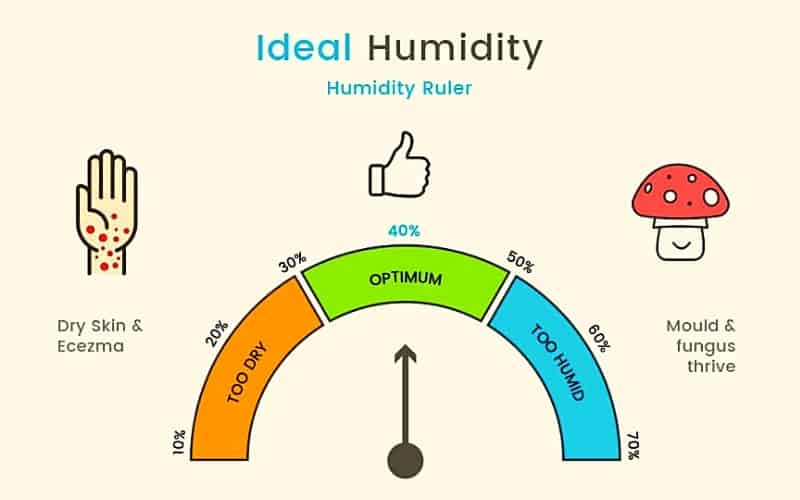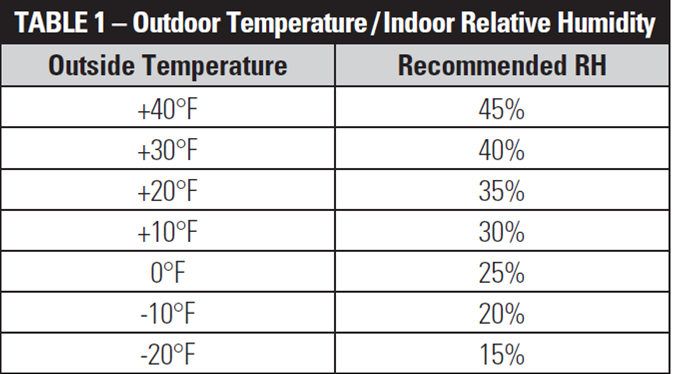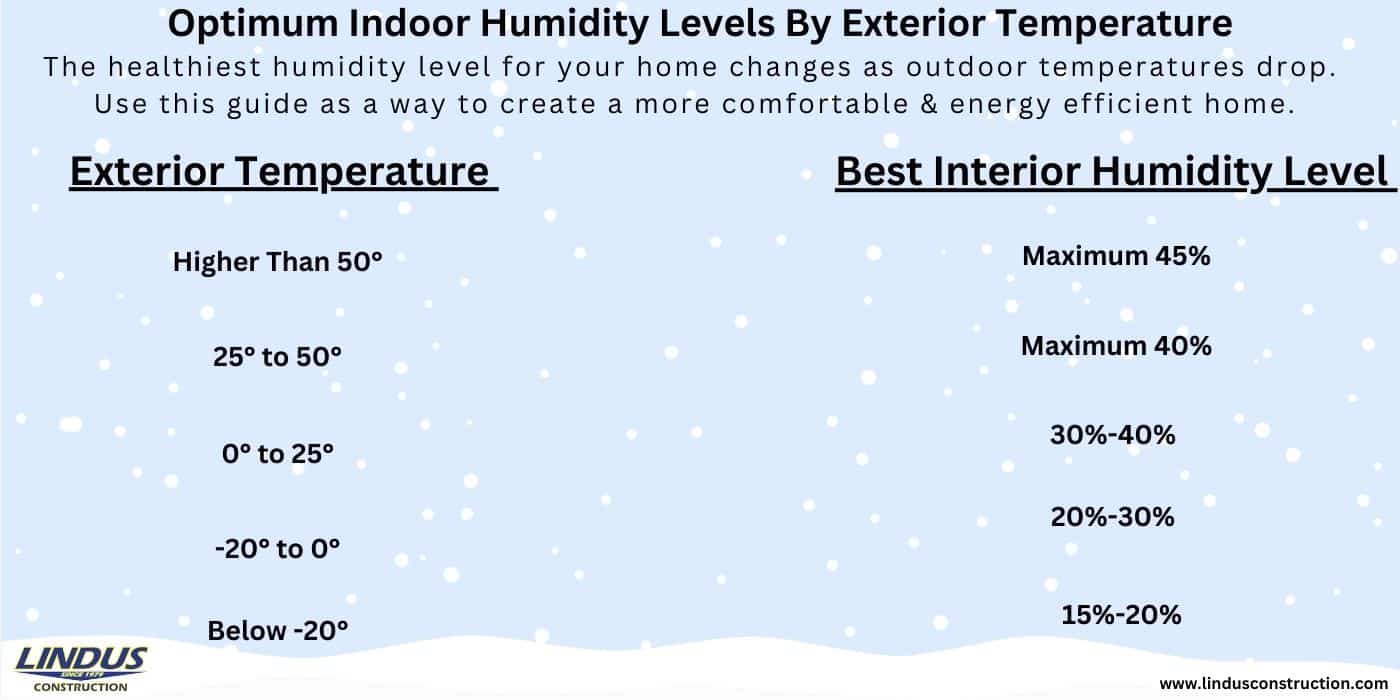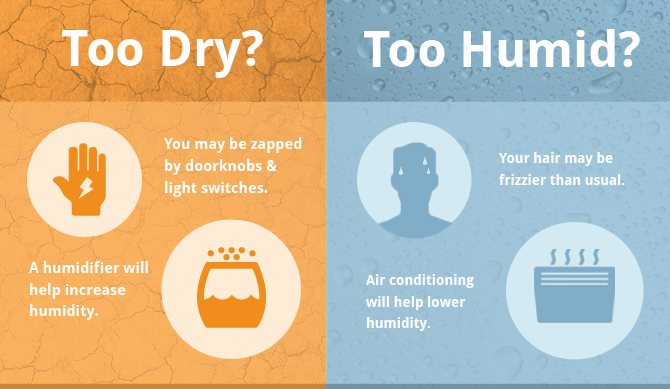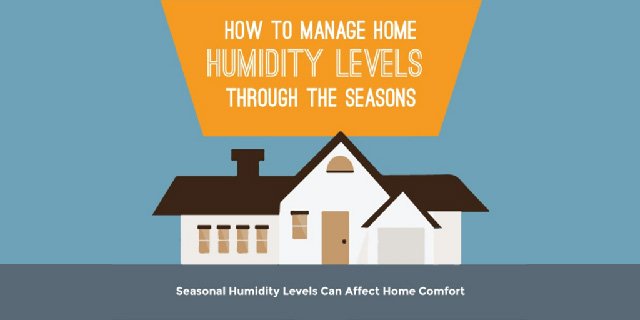What Should The Humidity In Your Home Be

One of the most frustrating issues homeowners face is that feeling of being uncomfortably cold or warm, even when the thermostat is set to a reasonable temperature. You might find yourself cranking up the heat in the winter or blasting the AC in the summer, only to still feel like you're battling the elements indoors. Often, this isn't just about temperature; it's about humidity. The right humidity level is crucial for both comfort and the health of your home.
Diagnosing the Humidity Problem
Before you call an HVAC technician, let's walk through a methodical process to determine if humidity is the culprit and, if so, what might be causing the issue. We'll break it down into steps you can take yourself, separating what you can check without any tools from situations where basic equipment is needed.
Step 1: Observe the Obvious - No Tools Needed
First, use your senses! Look for these tell-tale signs of high or low humidity:
- High Humidity Indicators:
- Condensation on windows or mirrors.
- Musty odors, especially in bathrooms, basements, or closets.
- Visible mold or mildew growth.
- Sticking doors or windows.
- A feeling of clamminess or stickiness in the air.
- Low Humidity Indicators:
- Static electricity – shocking yourself on doorknobs or furniture.
- Dry, itchy skin.
- Chapped lips.
- Cracked wood furniture or flooring.
- Increased nosebleeds or respiratory irritation.
If you observe several of these signs, you're likely dealing with a humidity problem. Note the severity and frequency of these issues. This information will be valuable later.
Step 2: Measure Humidity Levels - Basic Equipment Needed
Subjective observation is a good start, but it's essential to get an accurate reading of your home's humidity level. For this, you'll need a hygrometer. These are relatively inexpensive devices, readily available at most hardware stores or online retailers.
How to Use a Hygrometer:
- Place the hygrometer in a central location in your home, away from direct sunlight, vents, and exterior doors.
- Wait for at least 24 hours for the hygrometer to acclimate and provide an accurate reading.
- Record the humidity level. The ideal range is typically 30-50%. During the winter months, lower levels (around 30-40%) are generally acceptable.
- Take readings in different rooms of your home, especially in areas where you suspect humidity issues. This will help pinpoint problem areas.
- Take readings at different times of day. Humidity levels can fluctuate throughout the day, especially during seasonal changes.
Interpreting the Readings:
- Above 50%: Indicates high humidity.
- Below 30%: Indicates low humidity.
Step 3: Identify Potential Sources - No Tools Needed (Initially)
Once you've confirmed that your humidity levels are off, try to identify the source of the problem. Consider these factors:
- Seasonal Changes: Humidity levels naturally fluctuate with the seasons. Winter air is typically drier, while summer air is more humid.
- Household Activities: Activities like showering, cooking, and doing laundry can significantly increase humidity levels.
- Poor Ventilation: Inadequate ventilation in bathrooms and kitchens can trap moisture and lead to high humidity.
- Leaks: Check for leaks in your roof, plumbing, or foundation. Even small leaks can contribute to high humidity.
- Landscaping: Excessive vegetation close to your home's foundation can trap moisture.
- Crawl Spaces and Basements: These areas are prone to moisture infiltration. Check for dampness or standing water.
- Humidifiers and Dehumidifiers: Ensure these devices are functioning correctly and set to the appropriate levels. A malfunctioning unit can exacerbate humidity problems.
Make a list of all potential sources. This will guide your DIY efforts and help you determine if professional help is needed.
Simple DIY Actions to Adjust Humidity Levels
Based on your observations and measurements, here are some DIY actions you can take to improve your home's humidity levels. Always prioritize safety and follow the manufacturer's instructions for any equipment you use.
Addressing High Humidity
- Improve Ventilation:
- Use exhaust fans in bathrooms and kitchens while showering or cooking. Ensure they vent to the outside.
- Open windows (when the outdoor humidity is lower than indoor humidity) to circulate air.
- Consider installing a whole-house ventilation system if ventilation is consistently poor. (This might require professional installation).
- Control Moisture Sources:
- Fix any leaks in your roof, plumbing, or foundation. Start with visual inspections; more thorough inspections might require professional help.
- Dry wet surfaces immediately after showering or spills.
- Cover pots and pans while cooking to reduce moisture release.
- Vent your clothes dryer to the outside.
- Use a Dehumidifier:
- Place a dehumidifier in damp areas like basements or bathrooms.
- Choose a dehumidifier with the appropriate capacity for the size of the room.
- Empty the water reservoir regularly.
- Clean the dehumidifier's filter according to the manufacturer's instructions.
- Improve Air Circulation:
- Use fans to circulate air and prevent moisture buildup.
- Ensure furniture isn't blocking air vents.
- Manage Landscaping:
- Trim vegetation around your foundation to improve air circulation.
- Ensure proper drainage around your home's perimeter.
Addressing Low Humidity
- Use a Humidifier:
- Choose a humidifier that is appropriate for the size of your room or home.
- Clean the humidifier regularly to prevent mold and bacteria growth.
- Use distilled water in the humidifier to prevent mineral buildup.
- Adjust Your Thermostat:
- Lowering your thermostat can help retain more moisture in the air.
- Indoor Plants:
- Adding houseplants can increase humidity levels slightly through transpiration.
- Open the Bathroom Door After Showering:
- Allowing the moisture from your shower to circulate into the rest of the house can help increase humidity.
- Hang Laundry Indoors:
- Hanging wet laundry indoors allows the water to evaporate into the air, increasing humidity.
When to Call a Professional HVAC Technician
While many humidity problems can be addressed with DIY solutions, some situations require the expertise of a qualified HVAC technician. It's best to seek professional help if:
- You suspect a significant leak in your HVAC system: Refrigerant leaks can affect humidity levels and require specialized equipment to repair.
- You have mold growth that is widespread or difficult to remove: Mold remediation is a complex process that should be handled by trained professionals.
- Your HVAC system is old or malfunctioning: An inefficient system can struggle to maintain proper humidity levels.
- You have tried DIY solutions and the problem persists: It may be a more complex issue that requires professional diagnosis and repair.
- You are uncomfortable working with electrical or mechanical equipment: Safety should always be your top priority.
- You notice any of the following when your system runs:
- Unusual noises
- Burning smells
- Visible smoke
Specifically, if you suspect issues with your HVAC system's components such as:
- Evaporator coil: A frozen or dirty evaporator coil can significantly impact dehumidification.
- Condenser coil: Issues with the condenser coil can affect the AC's overall performance, including its ability to remove moisture.
- Ductwork: Leaky or poorly insulated ductwork can introduce unwanted moisture into your home.
Attempting to repair these components yourself can be dangerous and void your warranty.
Remember: A healthy home is a comfortable home. By understanding the factors that affect humidity levels and taking proactive steps to address any issues, you can create a more enjoyable and healthy living environment for yourself and your family.
.jpg?width=3508&name=Humidity level chart (1).jpg)
